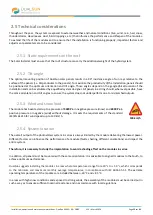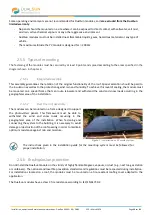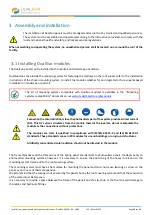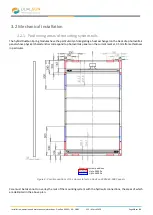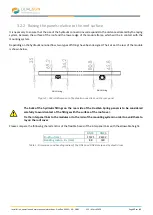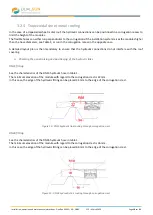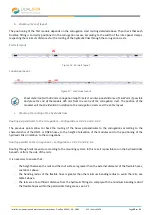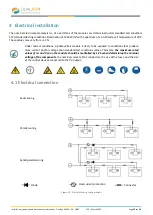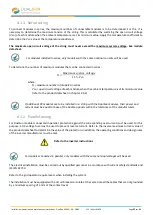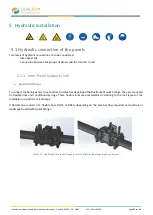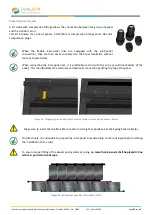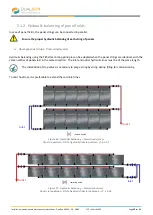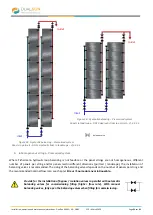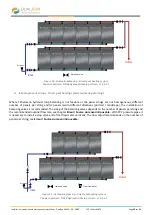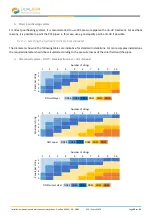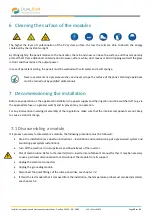
Installation, operation and maintenance instructions - DualSun XXXM
–
60
–
3BBP
V1.2
–
March 2020
Page
24
sur
41
4.2
Electrical fittings, cables and diodes
The DualSun solar modules are supplied with cables, connectors, and a pre-equipped junction box. Before installation,
check that the plugs and connections are not damaged.
Connect the positive plug of a module to the negative plug of the next module; see identification of the polarity of the
MC4 connectors below:
Figure 21 : MC4 connectors
To connect the modules, special solar cables with a minimum diameter of 4 mm2 and the appropriate connectors
must be used. These cables must be UV-and wear-resistant. Avoid leaving the cables exposed to the elements or place
them in a protective sheath.
Observe a minimum bending radius of 40 mm
.
When connecting the connectors, it is important to ensure that they are connected in a watertight manner (minimum
IP67).
When handling these cables, it is necessary to ensure that the tools used are dry.
All modules are supplied with pre-installed bypass diodes to minimize the hot spots and power losses of the modules
in the case of shading (partial).
Never connect or disconnect a live circuit.
Never open the junction box.
DualSun module junction box contains bypass diodes which are in parallel connection with the cell strands. If heat
spot occurs locally, the diode will come into operation to stop the main current from flowing through the heat spot
cells in order to restrain module overheating and performance loss. However, the bypass diode is not the overcurrent
protection device.
If the diode is suspected to get out of order, the installer or system maintenance supplier shall contact DualSun.
The diode type is 20SQ045 (for SUNTER, rated current is 15A, peak reverse voltage is 45V).
The replacement of the bypass diodes shall be done by qualified personnel only.
+
-



